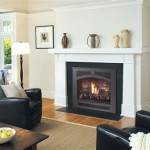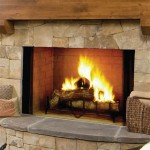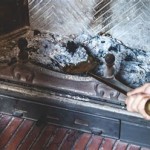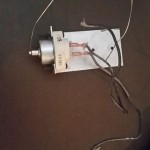Fake Brick For Fireplace: An In-Depth Guide
The visual appeal of brickwork, particularly around a fireplace, is undeniable. It evokes a sense of warmth, tradition, and rustic charm. However, installing genuine brick can be a costly, time-consuming, and structurally demanding undertaking. This has led to the rise in popularity of fake brick, also known as brick veneer or faux brick, as a viable and aesthetically pleasing alternative. This article will delve into the various aspects of utilizing fake brick for fireplace surrounds, including its benefits, types, installation considerations, and maintenance.
Fake brick offers a multitude of advantages over traditional brick. It is generally lighter, making it easier to handle and install, and reducing the need for extensive structural support. The installation process is often simpler and faster, translating to lower labor costs. Furthermore, fake brick is available in a wide range of colors, textures, and styles, allowing for greater design flexibility. The cost of materials is usually lower than that of real brick, making it a budget-friendly option for homeowners looking to enhance their fireplace aesthetic.
Understanding the Different Types of Fake Brick
The market offers several distinct types of fake brick, each with its own characteristics and suitability for different applications. Understanding these variations is crucial for making an informed decision based on budget, desired aesthetic, and installation skills.
One common type is brick veneer, which consists of thin slices of real brick adhered to a backing material such as cement or fiberboard. This provides the appearance of genuine brick while significantly reducing the weight and installation complexity. Brick veneer offers a relatively authentic look and feel, but it can be more expensive than other options.
Another popular option is faux brick panels. These are typically made from lightweight materials like polyurethane or high-density foam, molded to resemble brick. Faux brick panels are easy to install, often requiring only adhesive and basic tools. They are also relatively inexpensive and come in a wide variety of styles and colors. However, they may not have the same texture or feel as real brick or brick veneer, and their durability can vary depending on the material used.
There are also brick tiles, which are thinner and lighter than traditional bricks but are still made of clay or concrete. These tiles are installed similarly to ceramic tiles, using mortar and grout. Brick tiles offer a more durable and authentic look than faux brick panels, but they are also more expensive and require more skill to install properly. They offer a good middle ground between the cost and authenticity of real brick and the convenience of faux brick panels.
Finally, some products offer a brick-like appearance through the use of textured paint or coatings applied directly to the fireplace surround. This is the least expensive option but also generally provides the least realistic brick effect. This option is best suited for projects where cost is the primary concern and a subtle brick texture is desired.
Crucial Considerations for Fireplace Installation
Installing fake brick around a fireplace requires careful planning and adherence to specific safety guidelines to ensure a safe and aesthetically pleasing result. The primary concern is heat resistance. Not all fake brick products are suitable for use near a fireplace, especially the firebox opening. It is crucial to select materials that are specifically rated for high-temperature applications.
The substrate, or the surface to which the fake brick will be attached, must be clean, dry, and structurally sound. Any loose paint or debris should be removed to ensure proper adhesion. Depending on the type of fake brick being used, a bonding agent or primer may be required to improve adhesion. For non-combustible fireplace surrounds like concrete or brick, the substrate needs to be prepared for proper mortar adhesion.
Proper ventilation is also important, particularly if the fireplace is wood-burning. Ensure that the installation of fake brick does not obstruct any vents or air intakes. This is especially crucial for gas fireplaces where proper venting is essential for safe operation. The manufacturer's instructions for both the fake brick and the fireplace itself should be carefully followed.
The installation process itself will vary depending on the type of fake brick being used. Brick veneer and brick tiles typically require mortar and grout, similar to installing ceramic tiles. Faux brick panels often use adhesive and can be cut to size with a utility knife or saw. It is important to use the correct type of mortar, grout, or adhesive recommended by the manufacturer to ensure proper adhesion and longevity. Precision cutting and careful alignment are essential for achieving a professional-looking finish.
It is also important to consider the overall design and aesthetic of the room. The color, texture, and style of the fake brick should complement the existing décor and create a cohesive look. Consider the scale of the brick in relation to the size of the fireplace and the room. Smaller bricks can make a small fireplace appear larger, while larger bricks can create a more dramatic statement in a large space.
Maintenance and Longevity of Fake Brick
The longevity of fake brick depends on the material, installation quality, and maintenance practices. Proper cleaning and care can significantly extend the lifespan of the installation.
Regular cleaning is essential to prevent dirt and grime from accumulating on the surface of the fake brick. A mild detergent and water solution can be used to clean most types of fake brick. Avoid using harsh chemicals or abrasive cleaners, as these can damage the surface and alter the color. A soft brush or sponge can be used to gently scrub the brick, paying particular attention to any textured areas.
For brick veneer and brick tiles, it is important to maintain the grout lines. Grout can become stained or discolored over time, so regular cleaning is necessary to keep it looking fresh. A grout cleaner can be used to remove stubborn stains. Sealing the grout can also help to prevent stains and make cleaning easier. Pay attention to cracks or crumbling in grout lines, and make necessary repairs promptly to prevent water damage.
Faux brick panels are generally easier to clean than brick veneer or brick tiles. A damp cloth or sponge is usually sufficient to remove dirt and grime. Avoid using excessive water, as this can damage the panel material. Inspect the panels regularly for any signs of damage, such as cracks or chips. Minor repairs can often be made with patching compounds or adhesives. Avoid placing heavy objects against faux brick panels, as this can cause them to warp or break.
If the fake brick is exposed to direct sunlight, the color may fade over time. This is more common with faux brick panels than with brick veneer or brick tiles. Applying a UV-resistant coating can help to protect the color and prevent fading. Periodic reapplication of the coating may be necessary, depending on the amount of sunlight exposure.
In the event of damage, such as chips, cracks, or discoloration, repairs may be necessary. For brick veneer and brick tiles, individual bricks or tiles can be replaced. The damaged brick or tile is carefully removed, and a new one is installed using mortar and grout. For faux brick panels, patching compounds or adhesives can be used to repair minor damage. Larger damaged panels may need to be replaced entirely. The cost of repairs will depend on the type of fake brick, the extent of the damage, and the cost of labor.
By selecting the appropriate type of fake brick, employing proper installation techniques, and implementing a consistent maintenance schedule, the aesthetic and functional benefits of a faux brick fireplace surround can be enjoyed for years to come. Careful research and planning are critical to ensuring the successful integration of this cost-effective and visually appealing alternative.

If You Re Going To Make It Better Fake Diy Brick Fireplace

If You Re Going To Make It Better Fake Diy Brick Fireplace

If You Re Going To Make It Better Fake Diy Brick Fireplace

How To Diy Faux Brick Fireplace Shiplap The Simple Cozy Haven

Diy Faux Fireplace Updated Bless Er House

Our Diy Faux Brick Fireplace Re Decor More

If You Re Going To Make It Better Fake Diy Brick Fireplace

White Brick Fireplace Diy Build With Faux Barron Designs

Diy Faux Brick Fireplace 700 N Cottage

Diy Faux Fireplace Updated Bless Er House








